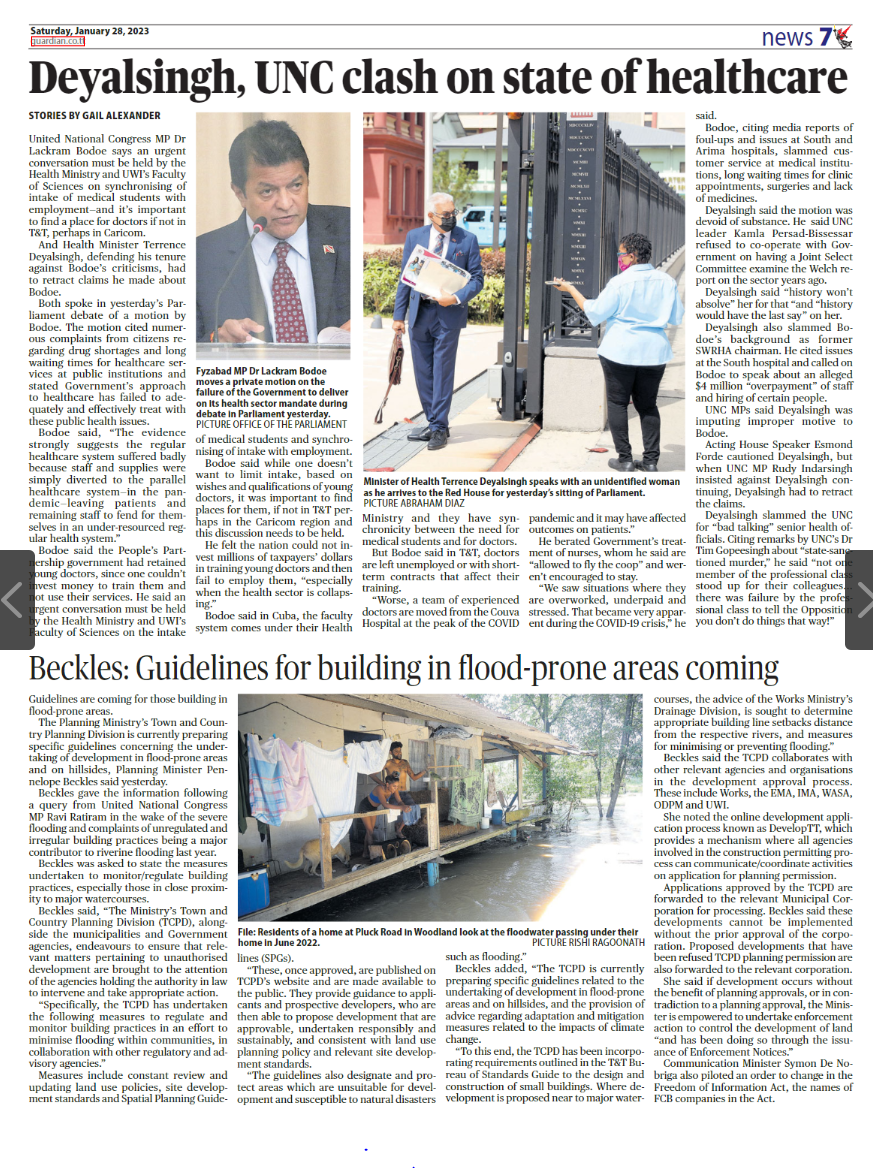Beckles: Guidelines for building in flood-prone areas coming
Guidelines are coming for those building in flood-prone areas.
The Planning Ministry’s Town and Country Planning Division
is currently preparing specific guidelines concerning the
undertaking of development in flood-prone areas and on
hillsides, Planning Minister Pennelope Beckles said yesterday.
Beckles gave the information following a query from United
National Congress MP Ravi Ratiram in the wake of the severe
flooding and complaints of unregulated and irregular building
practices being a major contributor to riverine flooding last
year.
Beckles was asked to state the measures undertaken to
monitor/regulate building practices, especially those in close
proximity to major watercourses.
Beckles said, “The Ministry’s Town and Country Planning
Division (TCPD), alongside the municipalities and Government
agencies, endeavours to ensure that relevant matters
pertaining to unauthorised development are brought to the
attention of the agencies holding the authority in law to
intervene and take appropriate action.
“Specifically, the TCPD has undertaken the following measures
to regulate and monitor building practices in an effort to
minimise flooding within communities, in collaboration with
other regulatory and advisory agencies.”
Measures include constant review and updating land use
policies, site development standards and Spatial Planning
Guidelines (SPGs).
“These, once approved, are published on TCPD’s website and
are made available to the public. They provide guidance to
applicants and prospective developers, who are then able to
propose development that are approvable, undertaken
responsibly and sustainably, and consistent with land use
planning policy and relevant site development standards.
“The guidelines also designate and protect areas which are
unsuitable for development and susceptible to natural
disasters such as flooding.”
Beckles added, “The TCPD is currently preparing specific
guidelines related to the undertaking of development in floodprone areas and on hillsides, and the provision of advice
regarding adaptation and mitigation measures related to the
impacts of climate change.
“To this end, the TCPD has been incorporating requirements
outlined in the T&T Bureau of Standards Guide to the design
and construction of small buildings. Where development is
proposed near to major watercourses, the advice of the Works
Ministry’s Drainage Division, is sought to determine
appropriate building line setbacks distance from the respective
rivers, and measures for minimising or preventing flooding.”
Beckles said the TCPD collaborates with other relevant
agencies and organisations in the development approval
process.
These include Works, the EMA, IMA, WASA, ODPM and UWI.
She noted the online development application process known
as DevelopTT, which provides a mechanism where all agencies
involved in the construction permitting process can
communicate/coordinate activities on application for planning
permission.
Applications approved by the TCPD are forwarded to the
relevant Municipal Corporation for processing. Beckles said
these developments cannot be implemented without the prior
approval of the corporation.
Proposed developments that have been refused TCPD planning
permission are also forwarded to the relevant corporation.
She said if development occurs without the benefit of planning
approvals, or in contradiction to a planning approval, the
Minister is empowered to undertake enforcement action to
control the development of land “and has been doing so
through the issuance of Enforcement Notices.”
Communication Minister Symon De Nobriga also piloted an
order to change in the Freedom of Information Act, the names
of FCB companies in the Act.
PICTURE RISHI RAGOONATH-
File: Residents of a home at Pluck Road in Woodland look at
the floodwater passing under their home in June 2022.

